ReGenesis
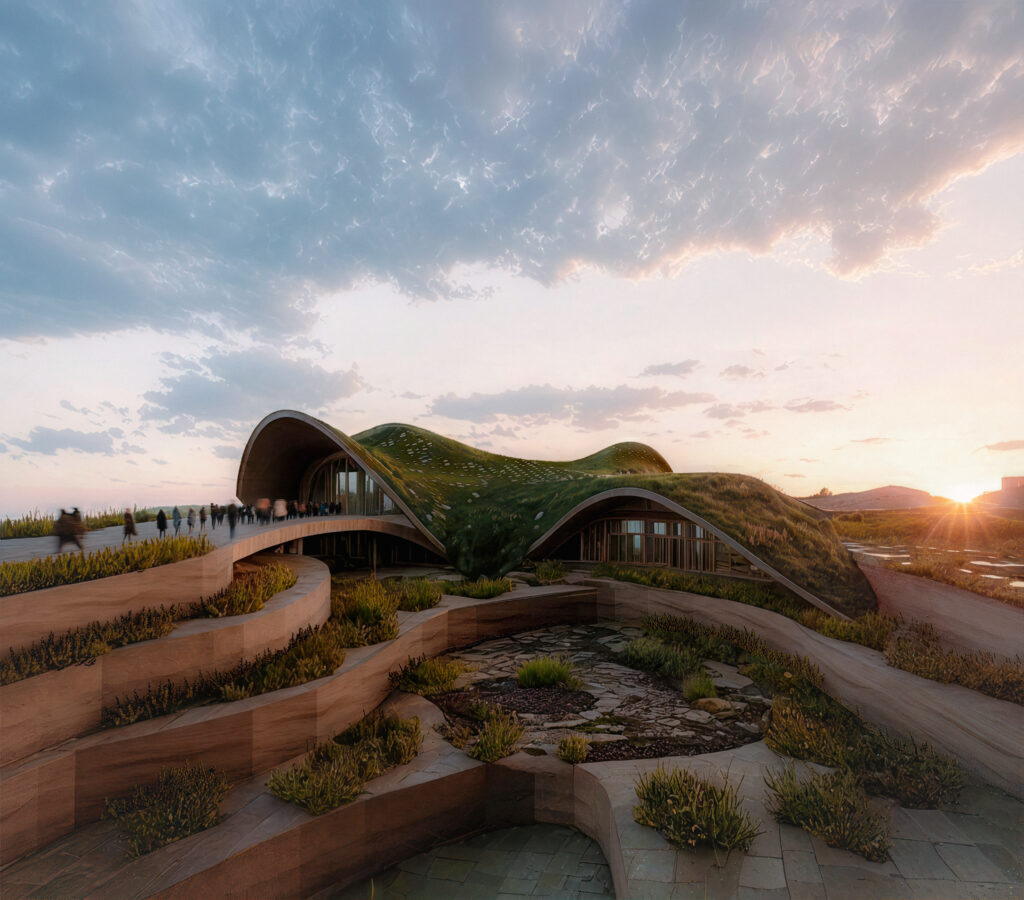
Team: Mariam Zelimger, Dariya Pilipak, Anastasiia Zabelina
Year: 2025
Location: Dove Holes Quarry, UK
Concept:
ReGenesis transforms an abandoned quarry from a degraded industrial site into a sanctuary where nature and community thrive together. The design restores biodiversity through rain gardens, greenhouses, and wildlife zones, while introducing public paths, cultural spaces, and sustainable systems that regenerate the landscape and weave it back into civic life.
Urban context:
The project is located in an abandoned quarry near a lake, formerly an industrial site. Surrounded by natural slopes and watercourses, it sits on the edge of the city, providing a unique opportunity to reconnect degraded land with the urban fabric. The site’s topography and existing vegetation inform pathways, terraces, and activity zones, creating a regenerative landscape that bridges nature and community.
The project is organized into three parts: Masterplan, Concert Hall, and Pavilions, each responding to the site’s terrain and ecological potential while creating interconnected public and cultural spaces.
ReGenesis:
Visitors move through accessible, eco-friendly paths that weave across the site, connecting terraces, green zones, and cultural spaces. A multifunctional amphitheatre, blending with the quarry’s contours, hosts concerts and events, while pergolas and gardens offer areas for relaxation, picnics, and seasonal activities. Elevators on steep slopes ensure inclusivity for all.
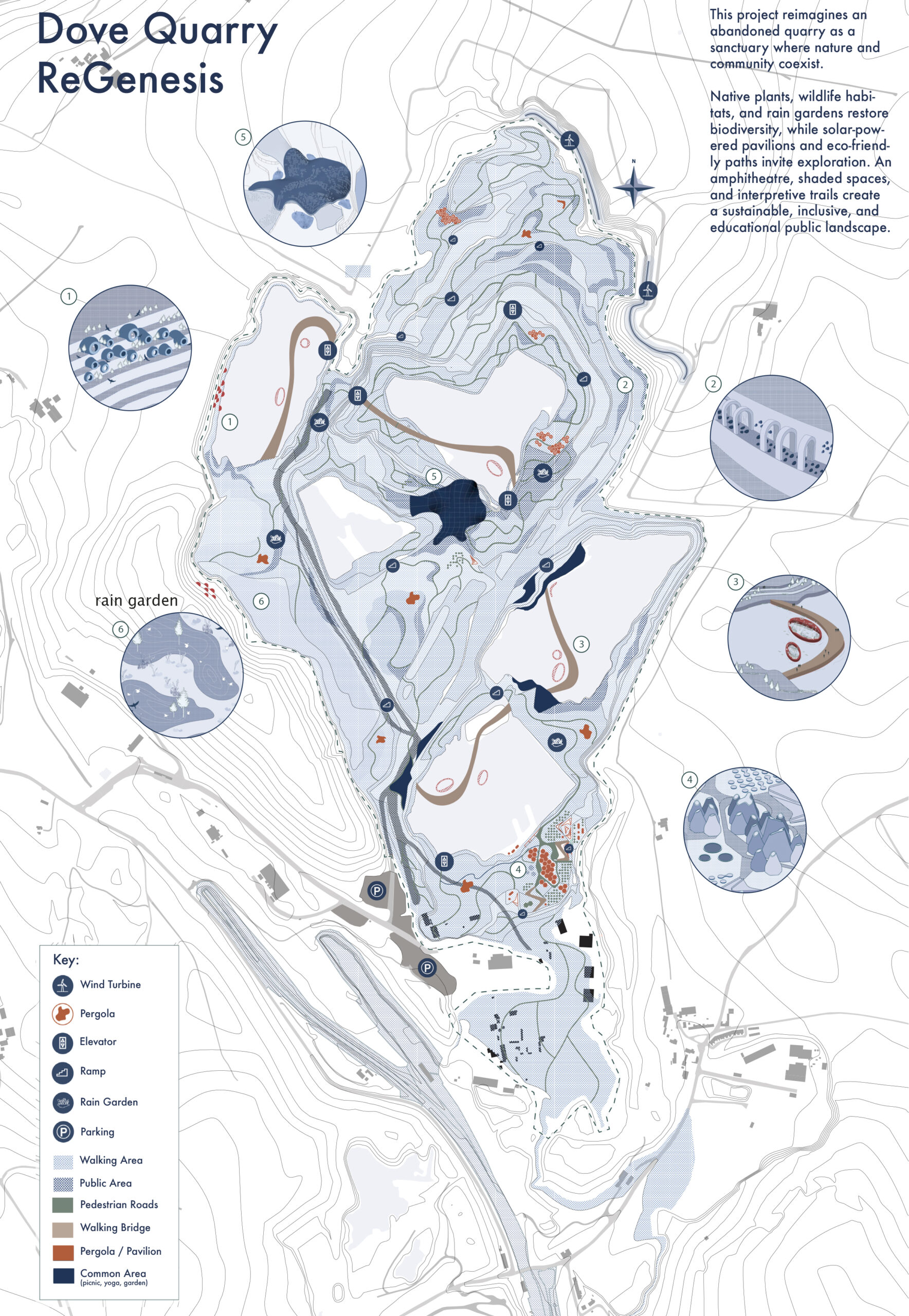
The masterplan also tells the story of transformation: guided tours, workshops, interpretive signage, and a history pavilion trace the quarry’s journey from industrial site to ecological sanctuary. Sustainability is embedded throughout, with solar-powered pavilions, off-grid energy systems, rain gardens, and locally sourced materials supporting a vision of long-term resilience.
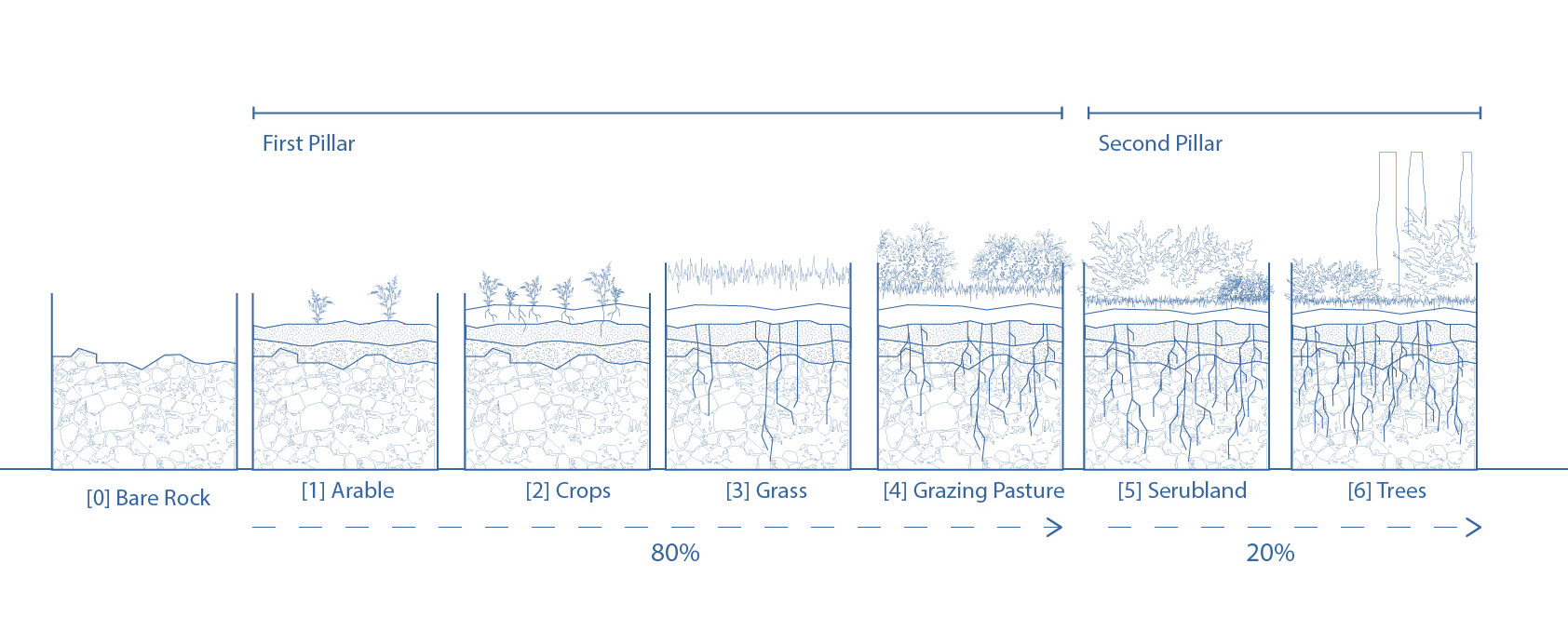
Self-Sustainable Concert Hall with nature-based solutions
The concert hall features an innovative larch wood waffle structure encircled by a glass ring facade. Its wavy roofcontinues the timber framework and forms a walkable surface with modular hexagonal panels, combining greenery, solar panels, and birdhouses to integrate ecological and energy-generating functions.
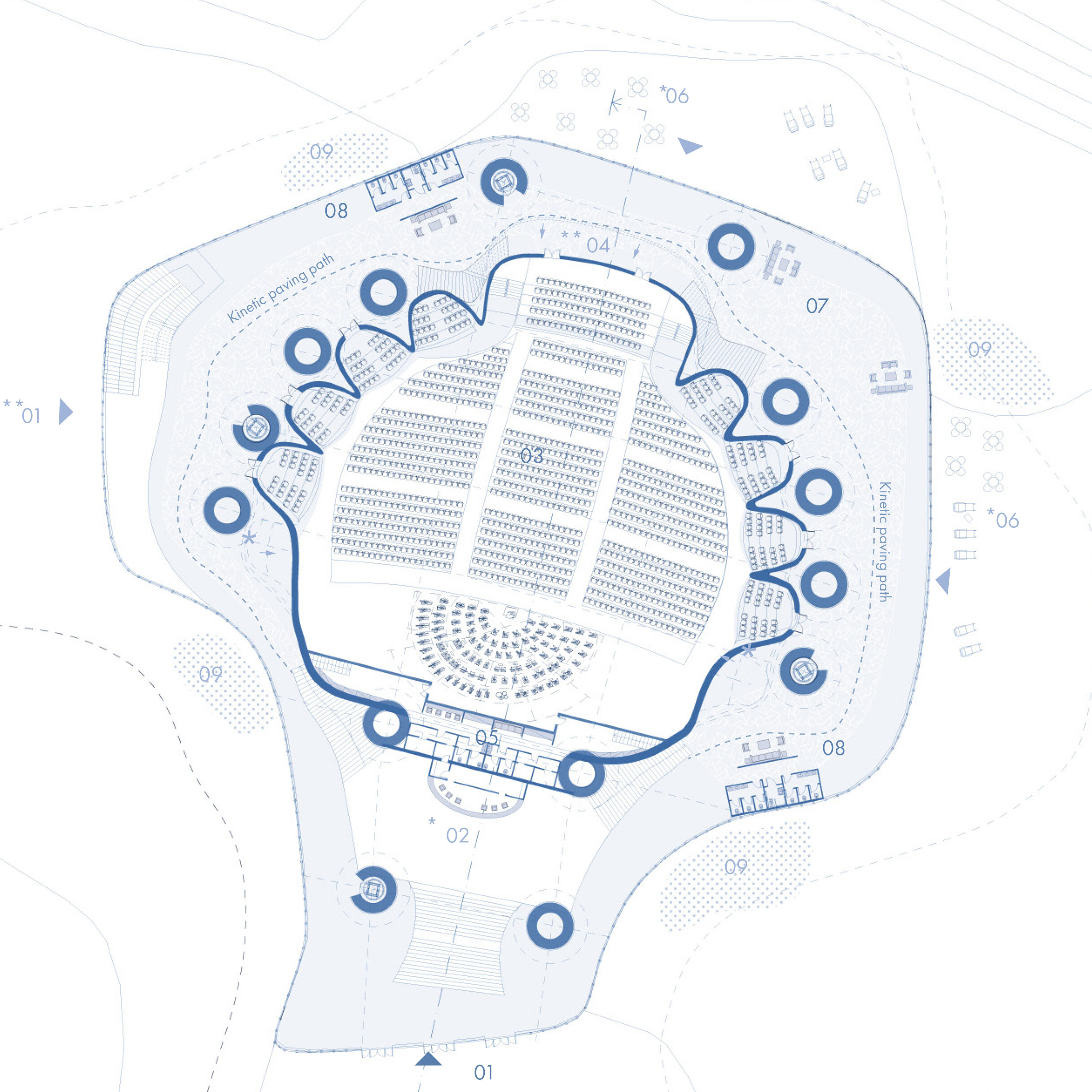
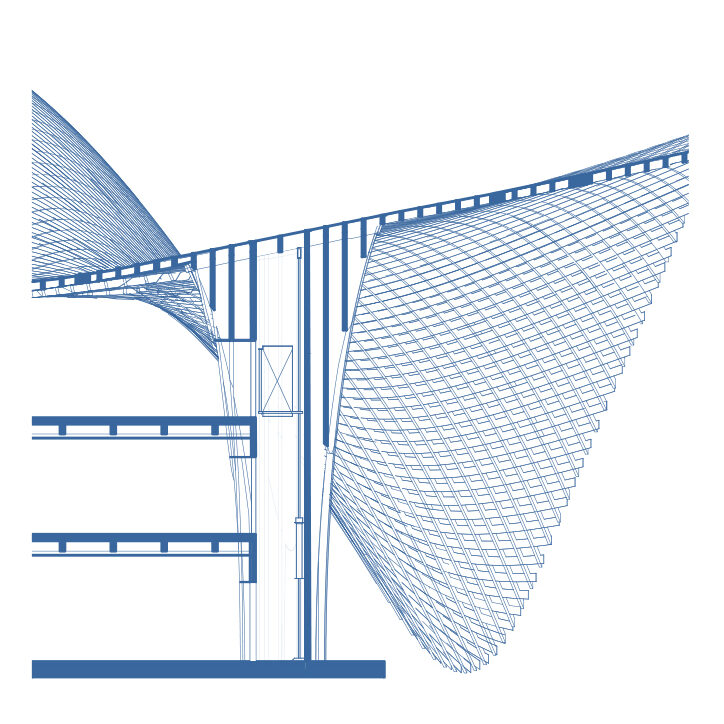
Sustainability is central: kinetic paving generates energy in high-traffic areas, rain gardens and cisterns manage water, and the glass facade with thermal-mass paving supports passive heating and cooling. Inside, bamboo ceiling panelsoptimize acoustics, providing an intimate experience for up to 1,700 visitors..

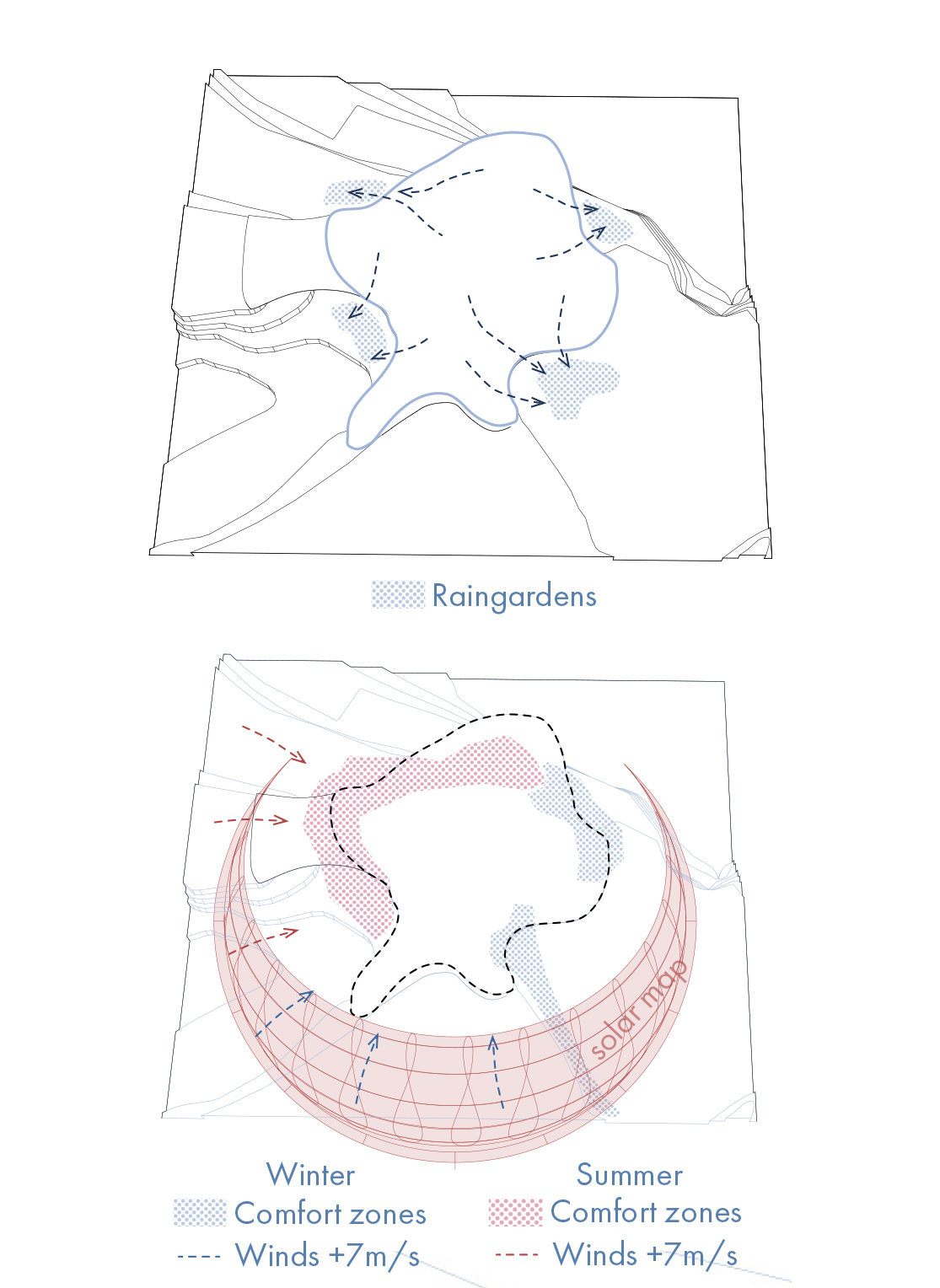
Spanning three levels, the hall includes terraces, a café, restaurant, service areas, and multiple balconies. The design harmonizes with the quarry landscape, creating a self-sustaining, climate-responsive venue that blends architecture, ecology, and community.
Quarry Biophilic Pavilion
The pavilion acts as a gateway to the quarry, merging with the landscape through three terraced levels that host public spaces for engagement and ecological integration. Community gardens, a rain garden, and a pier support biodiversity, while the upper level offers observation decks, an amphitheater, a sensory trail, indoor farms, and a café.
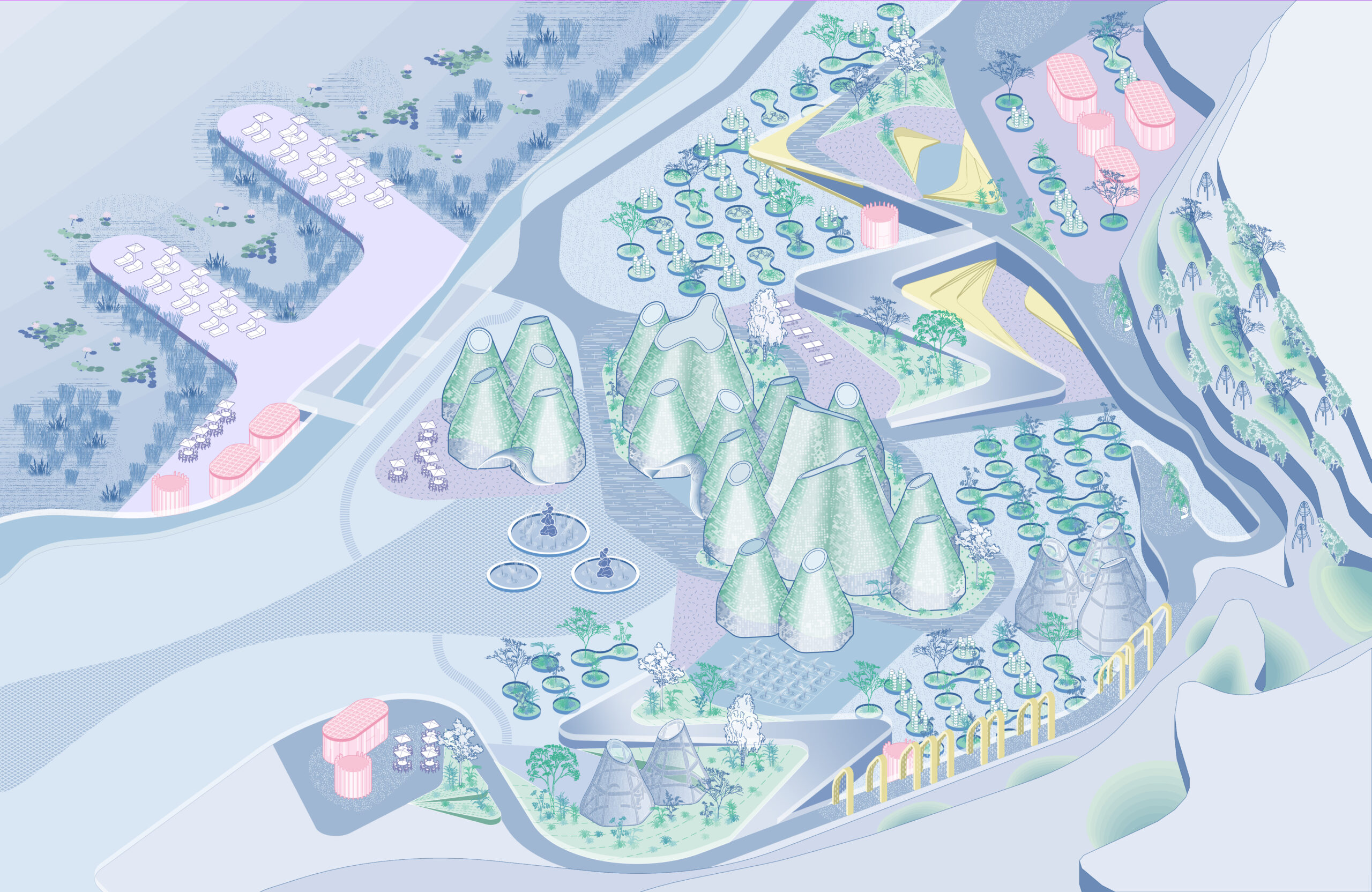
Its organic, modular structure, made of steam-bent wood and 3D-printed biodegradable walls, echoes natural forms. The facade, combining moss cement, quarry stone, and glass roofing, integrates solar panels, bird nesting spaces, and insect houses, ensuring both climate control and habitat creation.
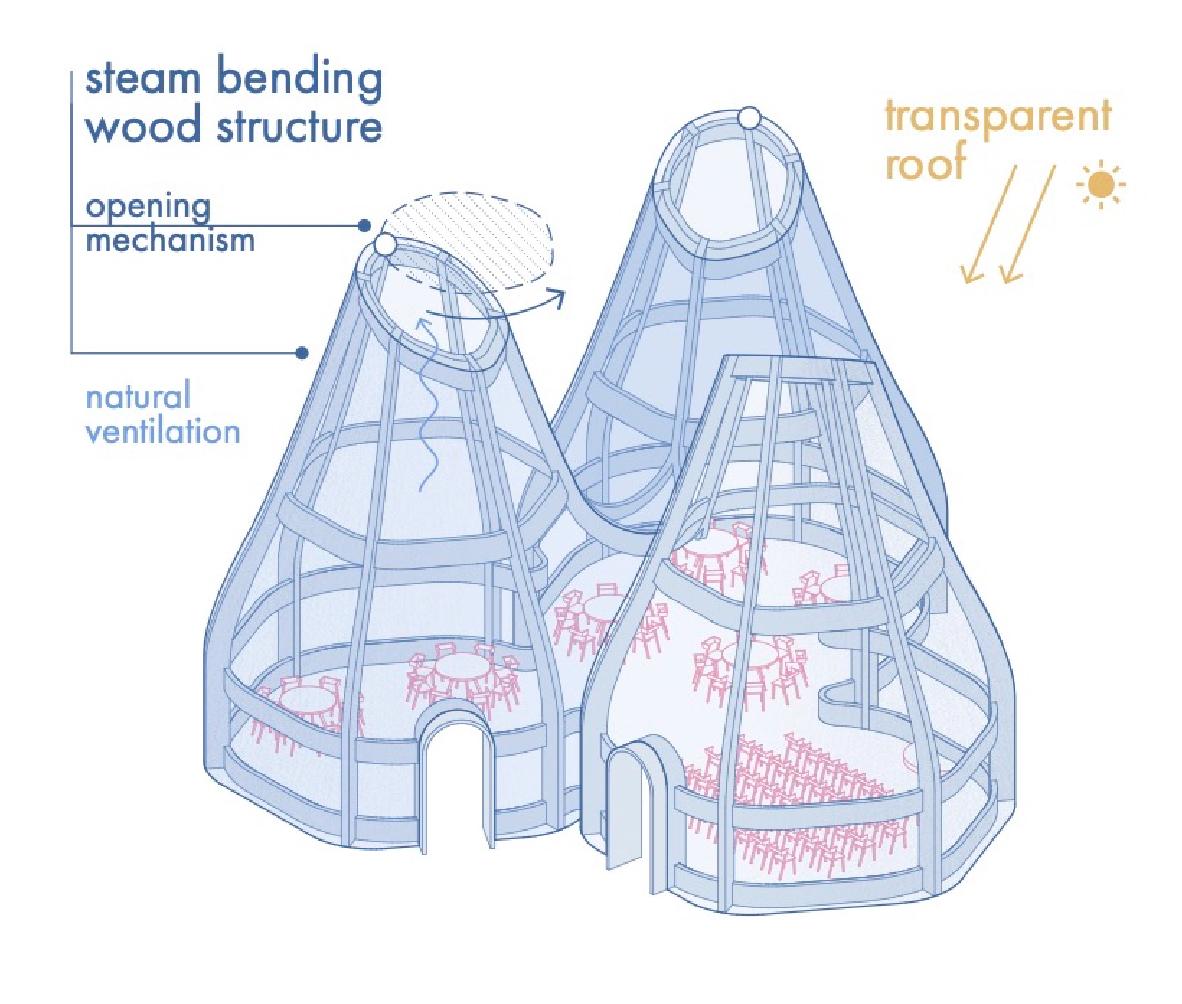
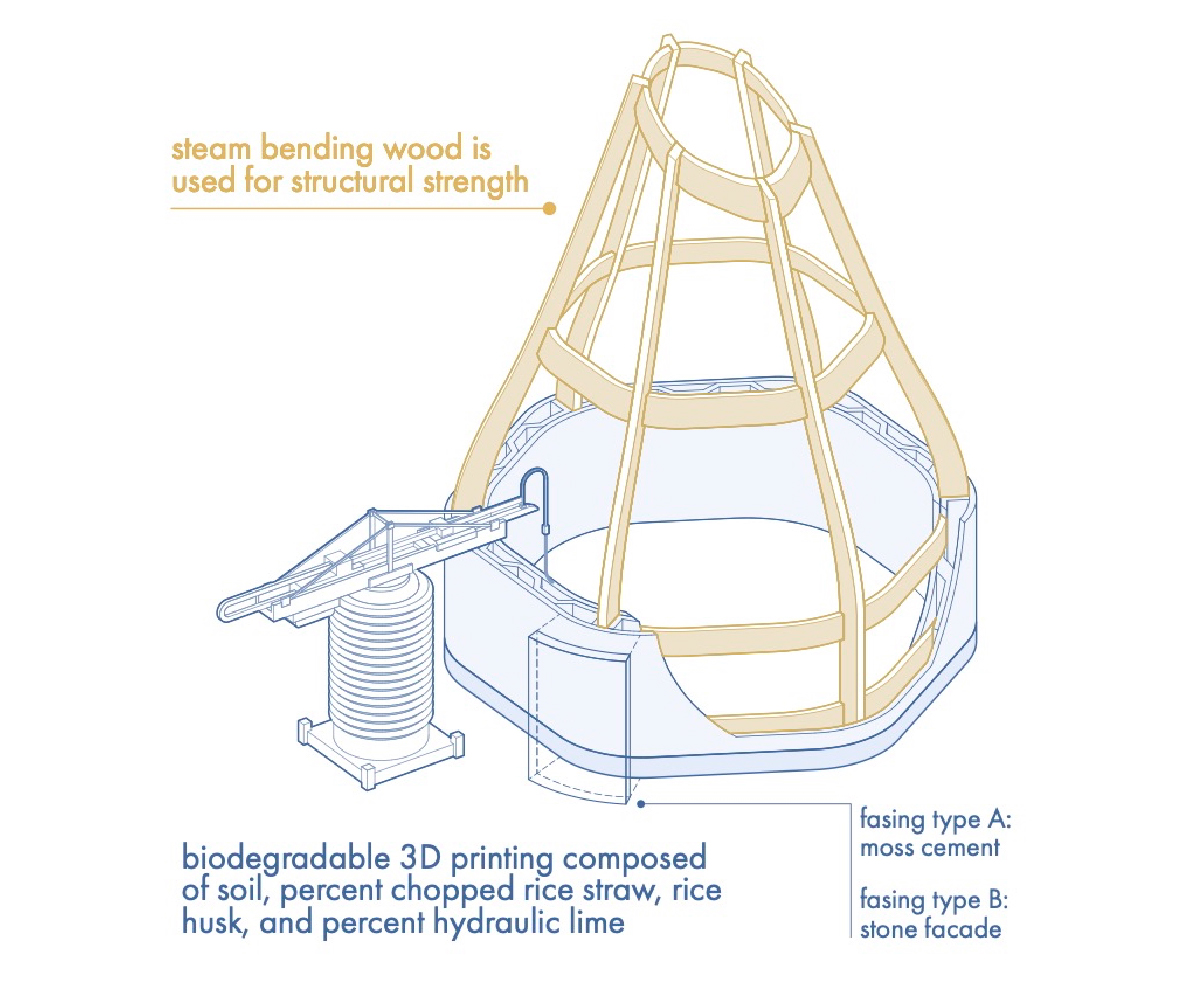
Operating entirely off-grid, the pavilion harnesses solar, wind, and kinetic energy, alongside a rainwater collection system. Through green corridors and dedicated wildlife zones, it ensures a harmonious coexistence between humans and nature.
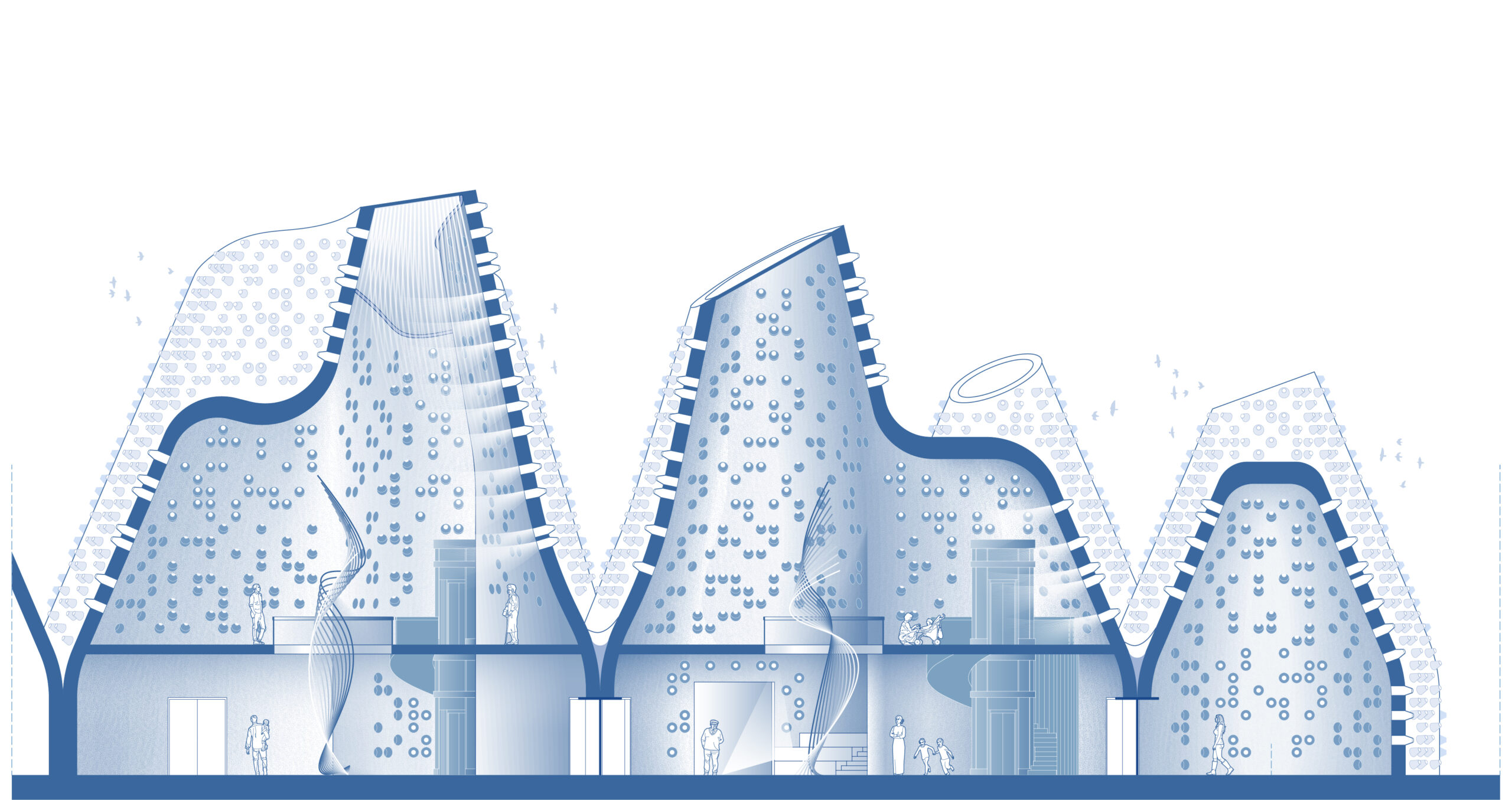
Conclusion:
ReGenesis transforms an abandoned quarry into a regenerative sanctuary where nature, community, and culture coexist. The design weaves restored habitats, accessible paths, gardens, and wildlife zones into the site’s topography, while the self-sustaining concert hall and biophilic pavilion integrate architecture with landscape. Renewable energy, water management, and modular structures support sustainability and inclusivity, creating a vibrant, educational, and immersive space that reconnects the city with its natural environment.